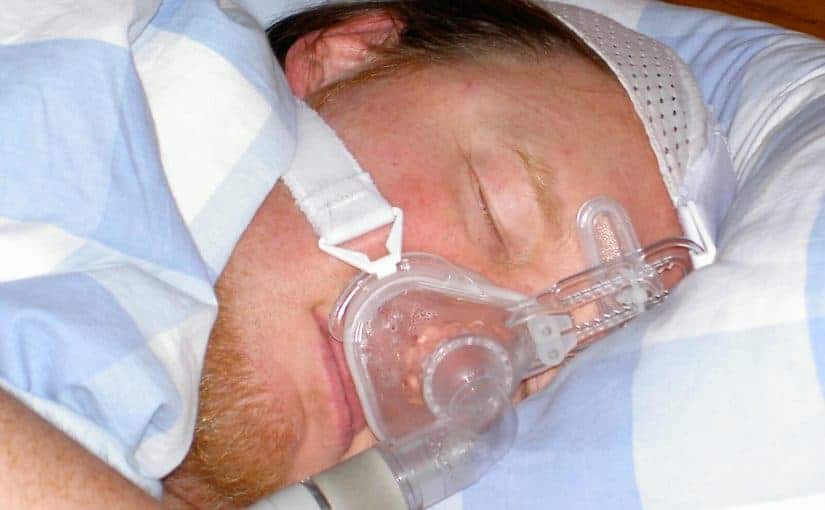Term Life Insurance Quotes
Sleep apnea is a condition that causes disturbances in breathing while sleeping. Typically, an individual with sleep apnea will quit breathing during sleep for a time period, varying from a few seconds to a few minutes. The individual will then usually begin breathing again, occasionally with a snorting sound. Most individuals considering life insurance with sleep apnea will likely anticipate some difficulty buy life insurance but that is not always true.
The disturbances often cause the person sleeping to come out of a deep sleep state into a lighter sleeping state, which can cause daytime drowsiness and even fatigue. People with this issue frequently are not aware until a family member or partner alerts them of the issue.
Types of Sleep Apnea
There are three kinds of sleep apnea to be aware of.
Central
With Central Sleep Apnea, your brain does not signal the body’s muscles that control your breathing. Typically, heart disease is the contributing factor.
Obstructive
A person with Obstructive Sleep Apnea experiences the air passage squeezed by an obstruction, like a large tongue, swollen tonsils, or just the closing of the soft tissue in the throat as your muscles relax.
Complex
Complex Sleep Apnea is a combination of central and obstructive sleep apnea.
Sleep Apnea Risk Factors
Research indicates that sleep apnea is likely to occur in males and females without regard to age. Increased risks are likely to include:
- Being obese
- Having a neck that measures more than 17 inches
- People with a narrow airway
- Males who are 65 and older
- Having a family history of the disorder
- People taking sleeping aids or pills and drinking alcohol before sleeping
- Cigar or cigarette smoking
- Sitting for a long period of time
- Persons with heart disease
- Persons with high blood pressure (hypertension)
- People who have suffered from stroke or other brain conditions
Sleep Apnea Statistics
The CDC has published the following statistics that indicate the significance of sleep apnea:
four to nine percent of men who are middle aged
two to 4 percent of women who are middle aged
80 to 90 percent of people who have sleep apnea are not aware of it
Sleep Apnea Prevention and Treatment
- Most people with sleep apnea are treated effectively with a CPAP (Continuous Positive Airway Pressure) device. A CPAP is a device that is worn while sleeping and maintains positive air flow by combating collapse of the throat.
- Lifestyle changes, such as weight loss, stopping tobacco/alcohol use, and elimination of caffeine or sedatives may help.
- Some individuals undergo a procedure to remove surplus tissue from the soft palate to try to alleviate symptoms.
- Sleeping on the side of the body instead of the back is helpful for some.
What the Insurer Will Look For
Life insurance companies are interested that those with sleep apnea are taking the appropriate measures to keep it under control. The life insurance company will be looking particularly at:
- Current, favorable sleep review to prove that treatment is doing the job
- Good reaction to ongoing treatment
- Repeated follow-ups with the doctor to be sure the C-PAP is working.
- Related medical diagnosis or risk factor, such as elevated blood pressure, cardiovascular disease, depression symptoms, stroke or being overweight
- No sleep-related collisions while driving
The rating class provided by insurers for applicants with sleep apnea will rely on the seriousness of the disorder, outcome of sleep studies, signs and symptoms, treatment, response and compliance with treatment, number of years since last symptoms, and the all-around health and mortality risk of the individual.
Unattended sleep apnea is often ranked poorly or may even be refused for coverage, as are individuals who have sleep apnea but do not abide by the doctor’s treatment instructions. The insurance company will be looking for evidence in the medical records that treatment advice is implemented and is effective.
Tips for Preparing for Your Insurance Application
Always follow your doctor’s treatment recommendations and make certain to complete follow-ups.
Schedule and complete a post-treatment study to have evidence treatment is successful.
Request current treatment notes from your doctor after each office visit.
Examples of Sleep Apnea Cases
Robert applied for life insurance at 52 years old. He had been diagnosed at age 46 after having a sleep study and was prescribed to use a CPAP. Robert uses the CPAP every night and visits his doctor twice per year as a follow-up. The doctor’s record makes it clear that his treatment is successful and his post-treatment study confirms this. He is a non-smoker and was approved for a Preferred Rate Class.
Louis applied for term life insurance at age 45 and was diagnosed with sleep apnea at age 43 with moderate sleep apnea. Louis’ doctor prescribed that he use a CPAP and stop smoking. After trying the CPAP, he found it uncomfortable and stopped the treatment. He has not returned for a doctor visit and continues to smoke cigarettes. The insurer postponed his application until a current sleep study has been completed. Since Louis did not have a sleep study completed in the allotted time provided by the insurer, his application for insurance was declined.
When applying for insurance with sleep apnea, proof of successful treatment is key to getting a favorable health classification. In most life insurance applications, the problems will typically arise because the applicant has not completed or followed up after treatment.
There is Good News
The great news about applying for term life insurance if you have sleep apnea is — yes, you can probably get coverage! The bad news is the acceptance and rate class can be very unpredictable and very subjective. Then again, if you follow the recommendations we’ve offered and, more importantly, talk about your circumstances with your life insurance agent, you can have a very positive end result.
To get more information about purchasing life insurance with severe medical conditions, contact an insurance professional at LifeInsure.Com today at (866) 868-0099 during normal business hours, or you can contact us through our website 24/7.
Conclusion
Understanding and managing sleep apnea is crucial not just for overall health and well-being but also for securing favorable terms when applying for life insurance coverage. The key takeaway from the stories of Robert and Louis is clear: adherence to treatment and proactive management of the condition can significantly impact the outcome of life insurance applications.
For those with sleep apnea diagnosis, the journey to securing life insurance may seem daunting due to the potential for higher life insurance premiums and the need for detailed medical documentation. However, by following medical advice, documenting treatment success, and communicating effectively with insurance providers, individuals can navigate this process more smoothly and qualify for life insurance.
Moreover, the evolving landscape of life insurance and sleep apnea offers a blend of challenges and opportunities. While insurers are cautious and require thorough evidence of condition management, the growing awareness and effective treatment options available mean that securing coverage is increasingly achievable. It’s imperative for applicants to view their condition through a lens of proactive management and open communication with their healthcare providers and insurance agents.
By doing so, not only can they improve their health and quality of life, but they also enhance their chances of obtaining life insurance coverage under favorable terms. This positive approach underscores the importance of responsible management of sleep apnea and opens the door to securing the necessary financial protection for the future, potentially even affecting their insurance quotes.
Check out Our Other Articles About High-Risk Life Insurance
For more information about obtaining affordable life insurance for high-risk applicants, call the insurance specialists at LifeInsure.Com at (866) 868-0099 during normal business hours, or you can contact us through our website at your convenience.
Frequently Asked Questions
Sleep apnea is a common sleep disorder where breathing repeatedly stops and starts. Individuals with sleep apnea may face challenges in obtaining life insurance as it is considered a health condition that can impact life insurance rates.
Yes, individuals diagnosed with sleep apnea can still apply for life insurance. However, the severity of the condition, such as moderate or severe sleep apnea, may affect the life insurance rates and options available.
For individuals with sleep apnea, it is important to research life insurance companies that specialize in providing coverage for those with pre-existing conditions for life insurance. This can help in finding the best life insurance that suits your needs.
The consistent use of a CPAP machine for sleep apnea can positively impact your life insurance application. Demonstrating compliance with treatment may improve your chances of obtaining coverage.
Yes, some insurance carriers offer specific term life insurance policies tailored for individuals with sleep apnea. It’s important to shop around and compare options to find the most suitable coverage.
To find affordable life insurance with sleep apnea, consider working with an agent experienced in securing coverage for individuals with similar conditions. They can help navigate the process and explore available options.

Last Updated on September 12, 2024 by Richard Reich

